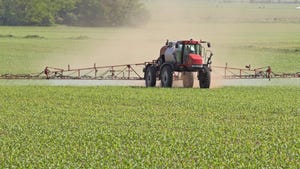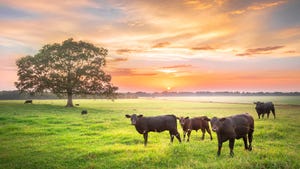
Are you interested in protecting water quality and reducing soil erosion? Or maybe you’d like to improve wildlife habitat or preserve and restore forests and wetlands. Maybe you’d like to do one or many of these things.
The Conservation Reserve Program can support agricultural producers and private landowners with these efforts. General CRP sign-up is happening now through April 7. However, sign-up is ongoing through continuous CRP, which includes several programs available through the Farm Service Agency.
In exchange for a yearly rental payment, farmers enrolled in CRP agree to remove environmentally sensitive land from agricultural production and plant species that will improve environmental health and quality.
The program also offers up to a 50% cost-share option for participants who establish approved cover on eligible cropland.
Under the Climate-Smart Practice Incentive, the program provides an incentive of 3%, 5% or 10% for CRP practices that will increase carbon sequestration, reduce greenhouse gas emissions and other climate-smart objectives. The incentive amount is based on the estimated benefits of each practice.
There are 23 million acres enrolled in CRP, with 1.9 million set to expire this year. FSA is aiming to reach the 27-million-acre cap statutorily set for fiscal 2023.
Contracts for land enrolled in CRP are from 10 to 15 years in length.
Calling CRP a “cornerstone voluntary conservation program,” USDA said it helps address climate change and helps agricultural communities invest in the long-term well-being of land and natural resources.
Producers and landowners enrolled more than 5 million acres into CRP through sign-ups in 2022, building on the acceptance of more than 3.1 million acres in the largest grassland CRP sign-up in history.
In 2021, FSA introduced higher payment rates, new incentives and a more targeted focus on CRP’s role in climate change mitigation.
General CRP
General CRP helps producers and landowners establish long-term, resource-conserving plant species — such as approved grasses or trees — to control soil erosion, improve water quality and enhance wildlife habitat on cropland.
Additionally, general CRP includes a Climate-Smart Practice Incentive to help increase carbon sequestration and reduce greenhouse gas emissions by helping producers and landowners establish trees and permanent grasses, enhance wildlife habitat, and restore wetlands, according to USDA.
Continuous CRP
Under continuous CRP sign-up, environmentally sensitive land devoted to certain conservation practices can be enrolled in CRP at any time. Offers are automatically accepted provided the producer and land meet the eligibility requirements and the enrollment levels do not exceed the statutory cap. The Climate-Smart Practice Incentive also is available in the continuous sign-up.
FSA offers several enrollment opportunities within continuous CRP, including the Clean Lakes Estuaries and Rivers Initiative (CLEAR30), the State Acres for Wildlife Enhancement (SAFE) Initiative, the Farmable Wetlands Program (FWP), and the Conservation Reserve Enhancement Program (CREP).
SAFE practices have been moved back to the continuous CRP sign-up, giving producers and landowners more opportunities to participate in the initiative. Through FWP, producers and landowners can enroll land in CRP as part of their efforts to restore previously farmed wetlands and wetland buffers, to improve both vegetation and water flow.
There have been several changes to CREP, which leverages federal and non-federal funds to target specific state, regional or nationally significant conservation concerns. Changes include reduced barriers and making the program more accessible to a broad range of producers and new types of partners. These updates included flexibility for partners to provide matching funds in the form of cash, in-kind contributions or technical assistance, along with an investment in additional staff to work directly with partners.
Grassland CRP
FSA will announce the dates for grassland CRP sign-up in the coming weeks. Grassland CRP is a working lands program, helping landowners and operators protect grassland — including rangeland and pastureland and certain other lands — while maintaining the areas as working grazing lands.
How to sign up
Landowners and producers interested in CRP should contact their local USDA service center to learn more or to apply for the program before their deadlines.
Producers with expiring CRP acres can use the Transition Incentives Program, which incentivizes producers who sell or enter a long-term lease with a beginning, veteran or socially disadvantaged farmer or rancher who plans to sustainably farm or ranch the land.
About the Author(s)
You May Also Like






